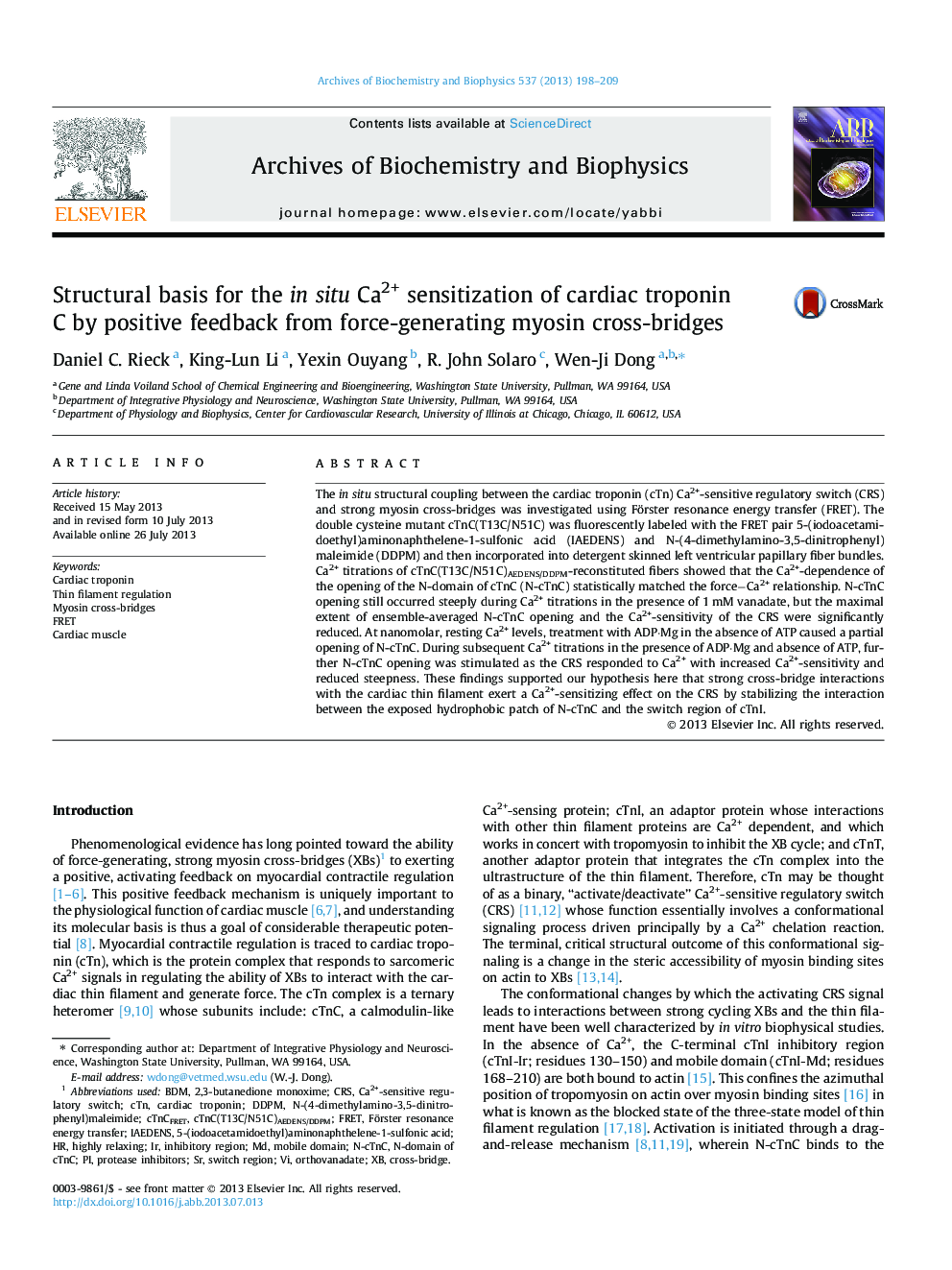| کد مقاله | کد نشریه | سال انتشار | مقاله انگلیسی | نسخه تمام متن |
|---|---|---|---|---|
| 1925327 | 1536364 | 2013 | 12 صفحه PDF | دانلود رایگان |

• FRET was used to monitor Ca2+-dependent N-cTnC opening in skinned myocardial fibers.
• Inhibition of strong cross-bridges reduced the maximal extent of N-cTnC opening.
• Cycling cross-bridges enhanced the overall exposure of the N-cTnC hydrophobic patch.
• Non-cycling strong cross-bridges stimulated N-cTnC opening under nanomolar Ca2+.
• The overall stability of N-cTnC opening correlated positively with Ca2+ sensitivity.
The in situ structural coupling between the cardiac troponin (cTn) Ca2+-sensitive regulatory switch (CRS) and strong myosin cross-bridges was investigated using Förster resonance energy transfer (FRET). The double cysteine mutant cTnC(T13C/N51C) was fluorescently labeled with the FRET pair 5-(iodoacetamidoethyl)aminonaphthelene-1-sulfonic acid (IAEDENS) and N-(4-dimethylamino-3,5-dinitrophenyl)maleimide (DDPM) and then incorporated into detergent skinned left ventricular papillary fiber bundles. Ca2+ titrations of cTnC(T13C/N51C)AEDENS/DDPM-reconstituted fibers showed that the Ca2+-dependence of the opening of the N-domain of cTnC (N-cTnC) statistically matched the force−Ca2+ relationship. N-cTnC opening still occurred steeply during Ca2+ titrations in the presence of 1 mM vanadate, but the maximal extent of ensemble-averaged N-cTnC opening and the Ca2+-sensitivity of the CRS were significantly reduced. At nanomolar, resting Ca2+ levels, treatment with ADP·Mg in the absence of ATP caused a partial opening of N-cTnC. During subsequent Ca2+ titrations in the presence of ADP·Mg and absence of ATP, further N-cTnC opening was stimulated as the CRS responded to Ca2+ with increased Ca2+-sensitivity and reduced steepness. These findings supported our hypothesis here that strong cross-bridge interactions with the cardiac thin filament exert a Ca2+-sensitizing effect on the CRS by stabilizing the interaction between the exposed hydrophobic patch of N-cTnC and the switch region of cTnI.
Figure optionsDownload high-quality image (170 K)Download as PowerPoint slide
Journal: Archives of Biochemistry and Biophysics - Volume 537, Issue 2, 15 September 2013, Pages 198–209